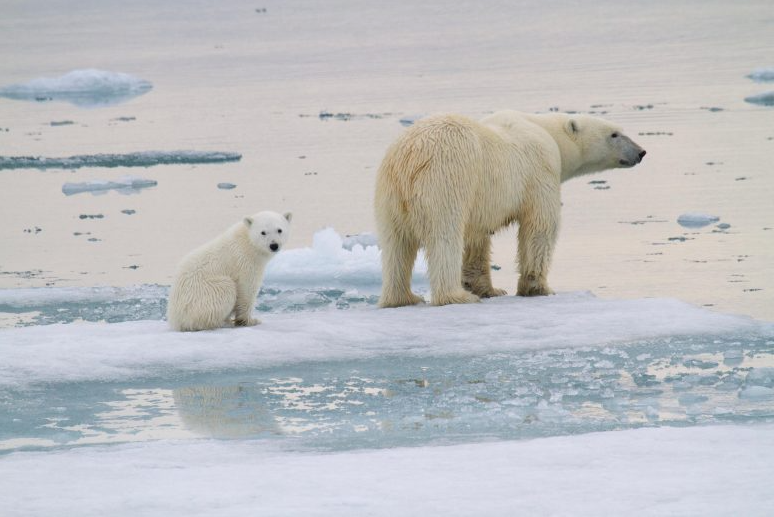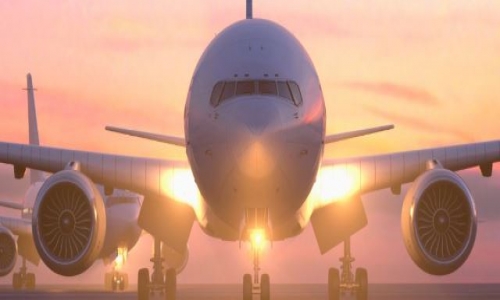


 6:32:44
6:32:44  2025-03-11
2025-03-11  713
713

Remote cameras were deployed in the Arctic mountains across nearly a decade; Valuable footage of moms and cubs emerging from dens shines light on elusive polar bear reproduction.
Researchers from Polar Bears International, the San Diego Zoo Wildlife Alliance, the Norwegian Polar Institute, and the University of Toronto Scarborough have provided the first detailed observations of polar bear cubs emerging from their dens. This breakthrough comes from nearly a decade of remote camera footage collected in Svalbard, Norway.
Published in the Journal of Wildlife Management on International Polar Bear Day, the study is the first to integrate satellite tracking collars with remote camera traps to investigate polar bear denning. Denning is notoriously challenging to study, as mother bears dig their dens beneath the snow in remote Arctic regions.
The findings offer new insights into the timing of den emergence and the behaviors of cubs and mothers after leaving the den. Additionally, the study introduces advanced monitoring tools for tracking polar bear dens across the Arctic. Since cub survival is critical to the species’ future—fewer than half of all cubs reach adulthood—the research underscores the need to protect undisturbed denning habitats, especially as industrial activity expands in the Arctic.
“Polar bear mothers are facing increasing difficulties reproducing due to climate-driven changes and will likely encounter further challenges as human activity expands in the Arctic,” says Dr. Louise Archer, lead author and Polar Bears International Postdoctoral Fellow at the University of Toronto Scarborough. She adds, “We’re excited to introduce new tools to monitor bears during this vulnerable time and gain insight into their behavior across the Arctic. This knowledge allows us to better protect cubs—and, ultimately, the species. Every den we monitored had its own story, and every data point adds to our understanding of this crucial time, supporting more effective conservation strategies.”
Key Findings:
“This study provides a rare glimpse into one of the most vulnerable and critical periods in a polar bear’s life, offering insights that can help guide our collective conservation efforts,” says Dr. Megan Owen, Vice President of Wildlife Conservation Science at San Diego Zoo Wildlife Alliance. “By combining innovative technology with long-term research, we’re gaining a deeper understanding of the challenges polar bear moms and cubs face in a rapidly changing Arctic. Protecting denning habitats is essential for population health, and this study provides invaluable insights that will help guide protective management.”
“Studies including observational data at polar bear den sites have been few, and this study thus contributes significantly to our knowledge about denning ecology,” says Dr. Jon Aars, Senior Researcher at the Norwegian Polar Institute, adding, “Further, as the data from satellite radio collars were available for all the mothers, the observational data made it possible to tell how changes in activity and temperature recorded correspond with behavior. This is of great value as a lot of data from collared females that have been in a maternity den is available.”
Methodology
Female polar bears were fitted with GPS satellite collars that recorded their location, temperature, and activity. Researchers used these collar data to locate dens, and they traveled through Svalbard’s mountains to deploy timelapse camera traps at thirteen den sites over six years (2016 – 2020 and 2023).
The study found that camera traps provided fine-scale insights into maternal den behavior, while satellite collars are accurate and useful for monitoring bears over longer periods and in more remote areas.
What are polar bear cubs doing right now?
Newborn polar bear cubs are currently snuggled in dens with their mothers across the Arctic. Polar bears typically give birth around New Year, at which point the cubs are blind, hairless, and just a 1/2 kg (or 1 lb). They grow quickly, nursing on their mom’s milk which is 31% fat, reaching around 10kg – up to 20 times their birth weight – by the time they leave the den in spring.
Polar bears emerge from their birthing dens between February and April of each year, with the timing varying depending on where they live– Polar Bears International created International Polar Bear Day (February 27th) to honor the time when moms and cubs are about to exit their dens. The duration of the denning period, timing of den emergence, and time spent at the den site after emergence all contribute to the survival of polar bear cubs.
Reality Of Islam |
|

"It is

The process

Astronomers

Cosmologist
 9:3:43
9:3:43
 2018-11-05
2018-11-05
10 benefits of Marriage in Islam
 7:5:22
7:5:22
 2019-04-08
2019-04-08
benefits of reciting surat yunus, hud &
 9:45:7
9:45:7
 2018-12-24
2018-12-24
advantages & disadvantages of divorce
 11:35:12
11:35:12
 2018-06-10
2018-06-10
 6:0:51
6:0:51
 2018-10-16
2018-10-16
 7:45:39
7:45:39
 2018-06-21
2018-06-21
 6:14:17
6:14:17
 2018-06-21
2018-06-21
 11:2:27
11:2:27
 2022-10-06
2022-10-06
 1:16:44
1:16:44
 2018-05-14
2018-05-14
allah will not answer all your prayers
 6:56:28
6:56:28
 2022-01-01
2022-01-01
 10:55:53
10:55:53
 2022-06-13
2022-06-13
 7:32:24
7:32:24
 2022-02-14
2022-02-14
 5:41:46
5:41:46
 2023-03-18
2023-03-18
| LATEST |